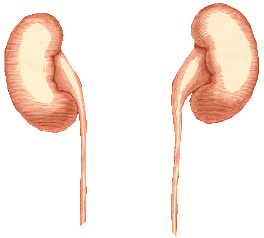User:Bron766/Arterial and venous blood gas/tutorial 1
Tutorial 1: Interpret the acid-base results of an Arterial Blood Gas. edit |
| Subject classification: this is a medicine resource. |

This is a set of exercises for practising skills related to Arterial Blood Gas (ABG) acid-base interpretation. You can work through all of the exercises or jump to whichever one you like. The first 4 steps cover the basics of ABG acid-base interpretation. There are a number of more detailed interpretation steps hidden at the bottom of the page when you're ready for them.
Note: when you submit a quiz, the page will re-load and depending on what browser you are using you may have to find and re-open the quiz to see the answers. This isn't an issue for old versions of Internet Explorer because they open all of the quizzes anyway, which does make for lots of scrolling. If you know how to make this style of page more compatible across multiple and old browsers, please have a go at editing this page or leave a comment on the Talk page.
Explanation
|
|---|
|
Quiz me!
|
|---|
|
You can use this quiz however you like. No marks are permanently recorded and there is no penalty for a wrong answer, so you may as well just have a go. You can skip questions or only answer one question. Press submit for feedback.
|
Explanation
|
|---|
|
Quiz me!
|
|---|
|
|
Explanation
|
|---|
|
Some acid-base terms are confusing!
But often things are complicated and there are multiple abnormal processes going on in the one patient. Each individual process may be pushing the pH in a different direction:
The overall pH is the sum of all the different processes happening at once. So even if the overall pH is low (acidemia), there might be an underlying acidosis AND an alkalosis at work. Or there might be multiple different acidoses at work (read more on that later). |
Quiz me!
|
|---|
|
|
Explanation
|
|---|
|
Acidemia can be caused by:
For example, poor lung ventilation causes CO2 to build up, eventually making the blood acidic. There can of course be more than one problem or abnormal acid/base process happening at once. For example, the primary problem can cause the body to compensate by increasing the opposite process to try and return the pH to normal. |
Quiz me!
|
|---|
|
|
Explanation
|
|---|
|
Alkalemia can be caused by:
|
Quiz me!
|
|---|
|
|
Explanation
|
|---|
|
Quiz me!
|
|---|
|
|
More advanced steps: coming soon, click here for a preview
| ||||||||
|---|---|---|---|---|---|---|---|---|
|
If it is metabolic acidosis, is it normal or high anion gap?
If it is metabolic alkalosis, is it chloride responsive?
Match the ABG results to the clinical situation
Mixed acid-base disorders:
|
http://www.youtube.com/watch?v=5wW2RYGUDV4 alternative method




